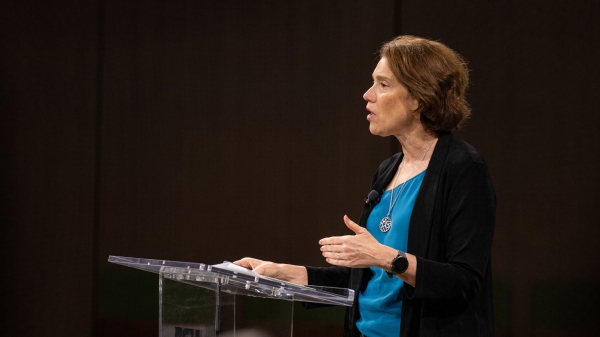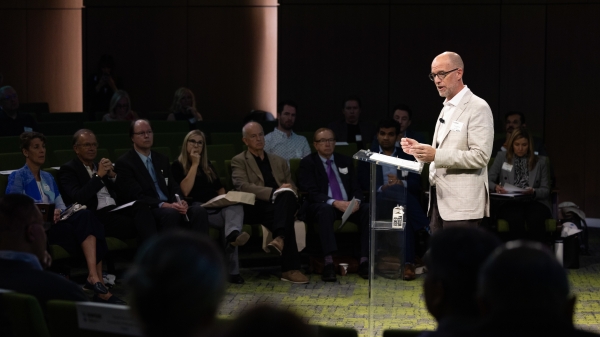Green subsidies may have hidden costs, ASU expert warns

The United States’ Inflation Reduction Act of 2022 uses tax credits and incentives for things like electric vehicles (EVs), solar power and wind power to meet its renewable energy and efficiency targets. Photo courtesy of Deposit Photos
Green subsidies can be powerful motivators that further environmental and sustainability goals. Even so, there may be some significant pitfalls to the status quo, according to a new paper published today in Science. "A cautious approach to subsidies for environmental sustainability" was co-authored by J. Marty Anderies, professor of environmental social science in ASU's School of Human Evolution and Social Change.
“We've got this odd juxtaposition of trying to get rid of subsidies in some sectors, and then ramping up subsidies in others,” says lead author Kathleen Segerson, Board of Trustees Distinguished Professor of Economics at the University of Connecticut. “The question that interested me was: Is this a good thing or a bad thing?”
Segerson, Anderies and their 22 co-authors are a group of internationally leading economists, ecologists, geographers, psychologists and other scientists who convened for the 2022 Askö Workshop sponsored by the Beijer Institute of Ecological Economics in Stockholm, Sweden.
For his part in the collaborative paper, Anderies lent his expertise in feedback control systems.
“Thinking about the way control systems work in general enables you to see how specific instances of those (systems) might work in specific cases,” says Anderies. “I was really interested in the use of subsidies as a tool to respond to changing environments.”
Anderies and his colleagues argue that while subsidies feature prominently in current national and international policies on climate change, they hinge on powerful groups of beneficiaries with a keen interest in keeping them in place. The phenomenon of rigid systems that can lead to the inability to end subsidies despite unintended consequences is something the writers refer to as “lock-in.”
“Think of the thermostat in this room. You set the temperature, so you're the controller, and you want to set the temperature to 70. That's the same as you're the policymaker on the temperature. Well, what if when you turned on your thermostat or set your thermostat to a certain number, unbeknownst to you, it turned on the sprinkler in your neighbor's yard and turned the thermostat down in your neighbor's house? I think one of the key issues here is a thermostat that once you turned it on, it was really hard to turn it off,” Anderies explained.
According to the paper’s authors, the rigidity of current subsidies has turned once beneficial actions into what they refer to as “negative externalities.”
For example, the United States’ Inflation Reduction Act of 2022 uses tax credits and incentives for things like electric vehicles (EVs), solar power and wind power to meet its renewable energy and efficiency targets. The public’s interest in affordable EVs has had a positive effect on greenhouse gas emissions, but it has also led to unforeseen negative consequences.
Increased EV production requires more lithium mining to build the cars’ batteries and an uptick in electricity consumption. In states like California, where electricity is produced relatively cleanly, EVs are a plausible transportation alternative. In North Dakota, where renewable energy programs are not as developed and the number of cars on the road is significantly lower, EV subsidies could, in fact, be harmful.
The authors argue that these unintended consequences are almost inevitable, given the complexities and uncertainties present in the modern world's ecological and socioeconomic systems. Still, Anderies and his colleagues believe there is merit in subsidies so long as they are pliable and able to be revised as environmental needs evolve.
“When we do implement any policy — regardless of what flavor it is, but subsidies in particular — because of some of the particular impacts they have or the way they function, we do have to be very careful to build in a sunset. (We have) to build in some mechanism to be able to turn that thermostat off and really do some careful thinking up front about what those side effects may be,” Anderies says.
The authors’ collaboration was supported by the Beijer Institute of Ecological Economics, Royal Swedish Academy of Science.
More Environment and sustainability

Researcher works on changing people's mindsets to fight climate change
Meaningful action to heal the climate requires a complete shift in the way people think and perceive each other, according to an expert on social transformation who spoke at Arizona State University…

NOAA, ASU offer workshop to bridge ocean exploration, education
Oceans are vital to sustaining life on Earth, as they produce over half of the oxygen we breathe and play a crucial role in regulating the planet's climate. They also support a diverse array of…

A united front for sustainability and the economy
When four leaders of esteemed learning institutions and the mayor of Phoenix gather in one location at the same time, it’s a tip-off that something big is going down.When they’re joined by visionary…
